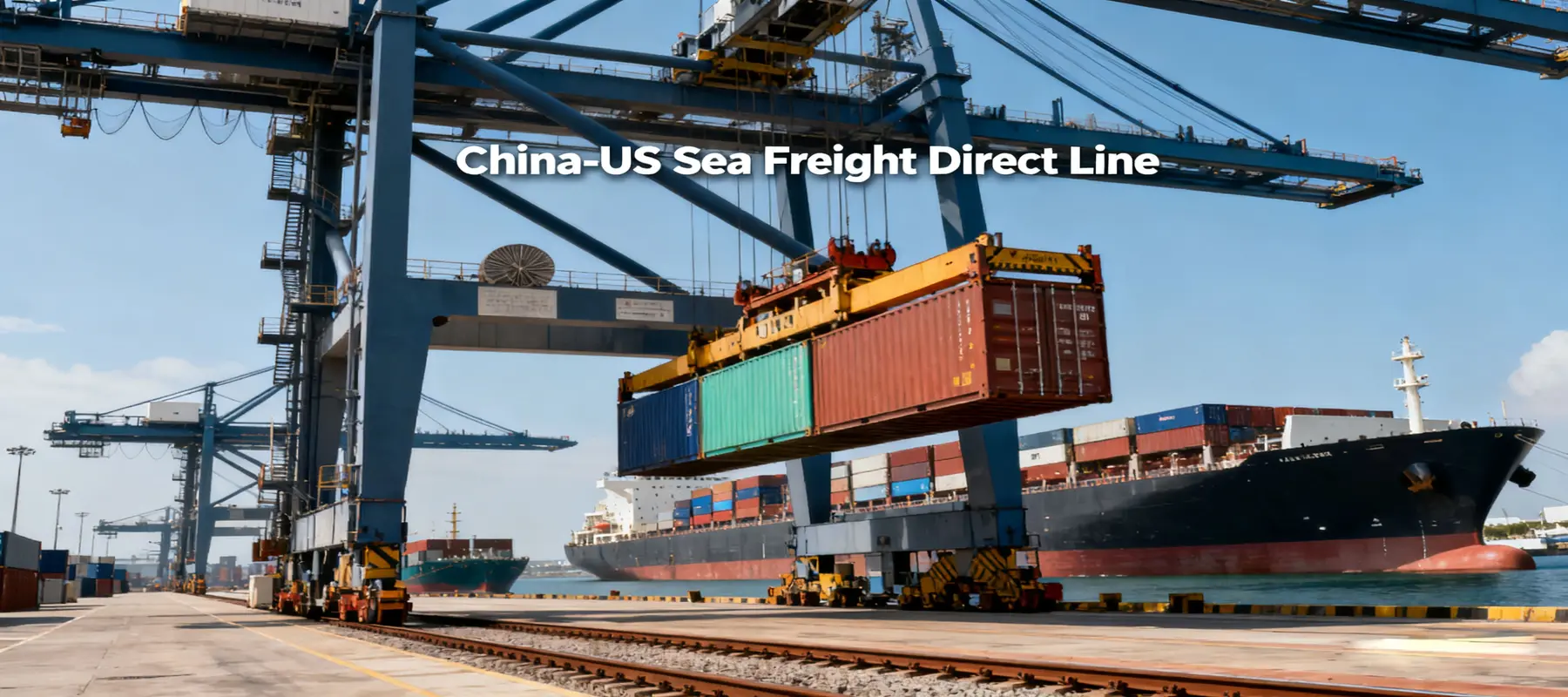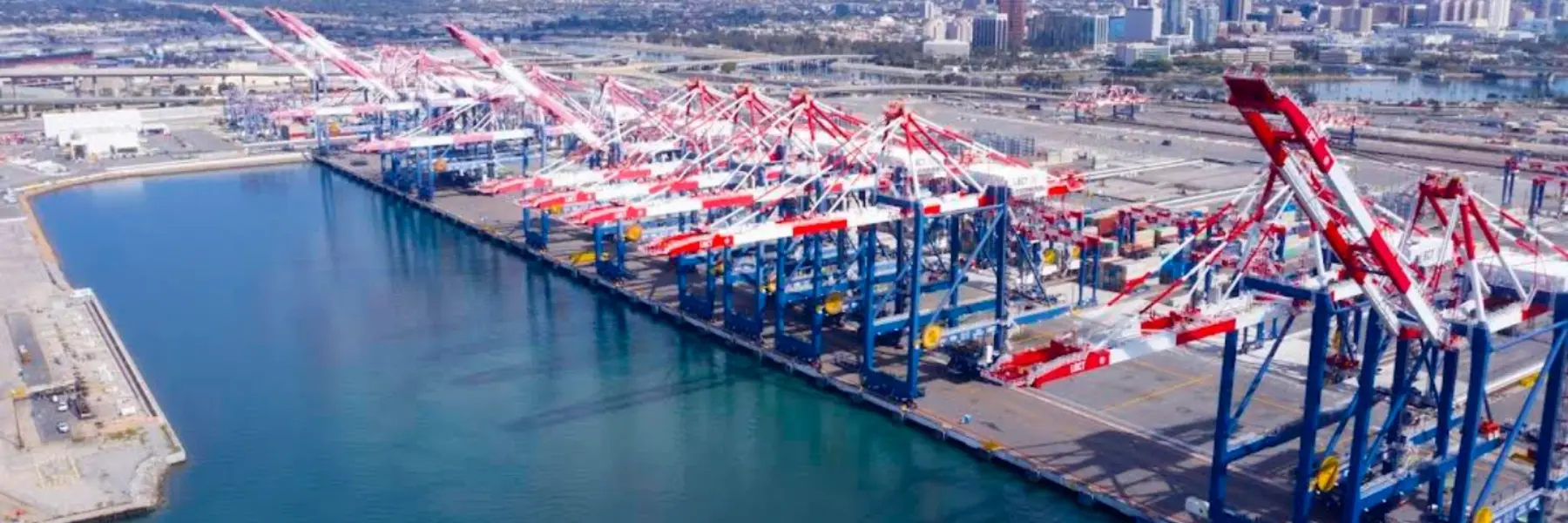
Complete Guide to Shipping from China to Kenai: Rates, Schedules & Customs Tips
Kenai, a vital coastal city in south-central Alaska, is the backbone of the state’s fishing, tourism, and energy industries—relying heavily on global shipping to import essential goods from China. As a remote Alaskan port, shipping from China to Kenai requires cargo to first arrive at larger U.S. West Coast or Alaskan international seaports (e.g., Port of Anchorage, Port of Seattle) before final delivery via regional barges or trucks. Understanding Ocean FCL, Ocean LCL, Ocean Freight, Airfreight costs, seasonal ship schedules, and Alaska-specific customs rules is critical to avoiding delays and optimizing costs. Partnering with a trusted China Freight forwarder like WanHaoFreight forwarder simplifies these complexities, leveraging expertise in Alaskan logistics to ensure smooth cargo flow. This guide covers everything you need to know about shipping from China to Kenai.
Ocean Freight from China to Kenai: FCL vs. LCL
Ocean Freight is the primary mode for bulk cargo to Kenai, accounting for over 65% of shipments—including fishing vessels, industrial equipment, and tourism supplies. It is split into two key modes: Ocean FCL (Full Container Load) and Ocean LCL (Less than Container Load), each tailored to different shipment sizes and industry needs.
Ocean FCL: Ideal for Bulk Fishing & Industrial Cargo
Ocean FCL involves booking an entire shipping container (10+ cubic meters/CBM) for exclusive use, perfect for Kenai’s fishing fleets importing large nets, processing machinery, or energy companies receiving heavy equipment. Key benefits include reduced damage risk (sealed containers protect against saltwater and Alaskan weather), faster transit (no waiting for cargo consolidation), and predictable pricing (including regional transit to Kenai).
Rates for Ocean FCL from China to Kenai depend on three factors: Chinese origin port, U.S. hub seaport, and container size. The most common sizes are 20-foot (20GP) and 40-foot (40GP/40HQ). From Shanghai Port (a top international seaport), a 20GP container to the Port of Anchorage (Alaska’s primary hub) costs $2,000–$2,800, plus $900–$1,300 for regional barge transport to Kenai (a 2–3 day journey). A 40HQ container (high cube, for bulky fishing gear) ranges from $2,500–$3,500, plus $1,100–$1,500 for regional delivery. From Shenzhen Port (another major international seaport), ocean rates to Anchorage are $150–$300 cheaper, but regional transit costs remain consistent. Seasonal peaks (March–May, ahead of Alaska’s salmon fishing season) raise ocean rates by 25–35%, while off-peak (October–December) offers 12–18% savings.
WanHaoFreight forwarder specializes in Ocean FCL solutions for shipping from China to Kenai. Their team negotiates with Alaskan-focused carriers (Matson, TOTE Maritime—experts in Arctic routes) for competitive hub seaport rates and coordinates with Kenai’s local barge companies to secure priority slots during fishing season. For businesses with annual equipment orders, WanHaoFreight offers long-term contracts to lock in combined ocean-regional costs, avoiding price volatility.
Ocean LCL: Cost-Saver for Smaller Shipments
For cargo under 10 CBM (e.g., small fishing parts, e-commerce goods for Kenai’s local shops, or medical supplies for rural clinics), Ocean LCL is the optimal choice. With LCL, your goods are consolidated with other shippers’ cargo at the U.S. hub seaport, spreading costs across parties—critical for Kenai’s small businesses and startups.
Ocean LCL rates from China to Kenai are calculated by chargeable weight (volume vs. actual weight). From Guangzhou Port (a key China Freight forwarder hub), rates to the Port of Seattle (a West Coast alternative to Anchorage) are $95–$135 per CBM, plus $220–$370 per CBM for regional truck/barge transit to Kenai. For example, shipping 6 CBM of fishing hooks and tackle from Guangzhou to Kenai would cost $570–$810 (ocean to Seattle) + $1,320–$2,220 (regional transit) = $1,890–$3,030. Additional fees include consolidation ($60–$100), documentation ($35–$55), and hub seaport handling ($80–$110). Unlike many freight forwarders, WanHaoFreight provides all-inclusive quotes—no hidden surcharges for weather-related barge delays or winter transit adjustments.
Transit time for LCL is 36–46 days (22–28 days ocean to hub seaport + 10–18 days regional transit to Kenai), compared to 30–40 days for FCL. If time is not critical (e.g., non-urgent tourism supplies like hotel linens), LCL is a budget-friendly option for small-scale shipping from China to Kenai.
Ocean Freight Schedules: China to Kenai
Ship schedules to Kenai are heavily influenced by Alaskan weather and seasonal demand, with most cargo relying on weekly sailings from China to U.S. hub seaports, followed by bi-weekly regional transit to Kenai.
From Shanghai to the Port of Anchorage: Carriers like Matson offer weekly sailings, with an ocean transit time of 24–28 days. Regional barge service from Anchorage to Kenai runs every 7–10 days (weather permitting), adding 2–3 days. Total transit time: 26–31 days. From Shenzhen to Anchorage: Weekly sailings take 26–30 days ocean + 2–3 days barge (total 28–33 days).
From Shanghai to the Port of Seattle: Weekly sailings take 18–22 days ocean, with regional truck/barge service to Kenai adding 5–7 days. Total transit time: 23–29 days. Rates here are $200–$400 higher than Anchorage, but faster ocean transit suits time-sensitive cargo like fresh fishing nets.
Weather is the biggest variable: Winter storms (November–February) can delay ocean sailings by 5–10 days and suspend regional barge service for 3–7 days, forcing reliance on ice-ready trucks (adding $300–$500 to regional costs). Summer fog (July–August) may cause 2–4 day barge delays. WanHaoFreight forwarder provides real-time tracking for both ocean and regional stages, including Alaskan weather updates, so you adjust plans for Kenai’s fishing or tourism seasons. It is recommended to book 4–6 weeks in advance to secure hub seaport sailings and regional transit slots.
Airfreight from China to Kenai: Speed for Urgent Cargo
Airfreight is a lifeline for Kenai’s urgent needs—such as emergency fishing parts, medical supplies for remote clinics, or perishable goods (e.g., fresh produce for tourism). Cargo is first flown to Anchorage’s Ted Stevens International Airport (ANC)—Alaska’s air cargo hub—before being transported via short regional flights to Kenai Municipal Airport (ENA).
Airfreight Rates & Transit Time
Airfreight rates from China to Kenai depend on weight, flight type, and regional connectivity. From major Chinese airports (Shanghai Pudong, Guangzhou Baiyun) to ANC: Direct cargo flights (14–16 hours) cost $4.30–$6.80 per kilogram. Regional flights from ANC to ENA add $1.60–$2.60 per kilogram, plus $50–$100 for ground delivery within Kenai. For example, shipping 100kg of emergency fishing engine parts from Shanghai to Kenai would cost $430–$680 (China to ANC) + $160–$260 (ANC to ENA) + $50–$100 (local delivery) = $640–$1,040.
Non-direct flights (via Seattle or Los Angeles) cost $3.50–$5.80 per kilogram to ANC but add 2–3 days to transit time. Total transit time for direct Airfreight is 4–7 days (including flight, customs clearance, and regional transit); non-direct Airfreight takes 6–9 days but offers 15–25% cost savings.
WanHaoFreight forwarder partners with airlines specializing in Alaskan routes (Alaska Airlines, Cathay Pacific) to secure priority cargo space—critical during Kenai’s fishing season (May–September) when demand for urgent parts spikes. They also offer temperature-controlled Airfreight for perishables (e.g., medical vaccines) and door-to-door service, covering pickup from Chinese warehouses, air transport, customs clearance, and delivery to Kenai’s docks, clinics, or fishing fleets.
Customs Clearance for Kenai-Bound Cargo
Customs clearance for Kenai shipments occurs at the U.S. hub seaport (Anchorage/Seattle) or ANC (for Airfreight), managed by U.S. Customs and Border Protection (CBP)—with additional checks for Alaskan-specific goods (e.g., fishing equipment, wildlife-related supplies). Non-compliance can lead to costly delays, especially during fishing season—here’s how to ensure a smooth process:
Required Documentation
WanHaoFreight forwarder assists in preparing and reviewing all these documents to avoid errors. For instance, missing NOAA permits for fishing gear can delay clearance by 7–10 days—their team has in-depth knowledge of Kenai’s industry regulations and ensures compliance upfront.
Tariffs & Duties
Tariffs on goods shipped from China to Kenai depend on the product’s HS code. Key examples relevant to Kenai’s economy include:
Duties are calculated as a percentage of the goods’ FOB (Free On Board) value. Kenai has no local import taxes, but Alaska’s state sales tax (0–7.5%, varying by borough) applies to goods sold within the state. WanHaoFreight also assists with duty drawback programs—if you re-export fishing equipment from Kenai to Canada, you may be eligible for a refund of duties paid.
Compliance Checks
CBP focuses inspections on high-risk cargo, including fishing gear (for safety and environmental compliance), medical supplies (for contamination risks), and electronics (for FCC certification). To avoid delays:
WanHaoFreight partners with third-party testing labs in China to verify compliance before shipping, reducing the risk of inspections by 45–55%—this is critical for avoiding missed deadlines during Kenai’s short but intense fishing season.
How to Choose the Right Freight Forwarder for Shipping from China to Kenai
Kenai’s remote location and Alaskan weather challenges require a freight forwarder with specialized expertise in Arctic logistics. Here’s why WanHaoFreight forwarder stands out:
Expertise in China-Kenai Routes
WanHaoFreight has over 12 years of experience shipping to Alaskan coastal cities like Kenai. Their team understands regional transit logistics (barge vs. ice-ready trucks), weather-related risks, and the unique needs of Kenai’s industries (fishing, tourism, energy). They know how to reroute cargo during winter storms and prioritize urgent fishing supplies to meet tight deadlines.
Transparent Pricing & Easy Get A Quote Process
Their website features a user-friendly “Get A Quote” tool that allows you to input cargo details (size, weight, urgency, industry) and receive a personalized, all-inclusive quote within 24 hours. The quote breaks down costs for ocean/air freight, regional transit fees, customs charges, and weather contingency costs—no hidden surprises, which is particularly important for small businesses in Kenai.
Full-Service Support
WanHaoFreight handles end-to-end logistics, including warehouse storage in China, cargo insurance (covering ocean freight, regional transit, and weather damage), customs clearance, and delivery to Kenai’s docks, clinics, or fishing fleets. Whether you need Ocean FCL for fishing machinery, Ocean LCL for tourism goods, or Airfreight for emergencies, their team provides dedicated support throughout the entire process.
Conclusion
Shipping from China to Kenai requires navigating Alaska’s unique challenges—harsh weather, remote logistics, and seasonal demand—but with WanHaoFreight forwarder, this process becomes manageable. Choose Ocean FCL for bulk fishing or industrial cargo, Ocean LCL for smaller shipments, or Airfreight for urgent needs. Leverage U.S. hub seaports (Anchorage/Seattle) for cost-effective transit, and rely on WanHaoFreight’s expertise to avoid delays. With transparent pricing, easy access to “Get A Quote” services, and Alaskan-specific knowledge, WanHaoFreight allows you to focus on Kenai’s core industries while they handle the complexities of global shipping. Ready to get started? Contact WanHaoFreight today to receive your personalized shipping solution for China to Kenai.
 Easy Shipping From Global, Save Cost
Easy Shipping From Global, Save Cost














